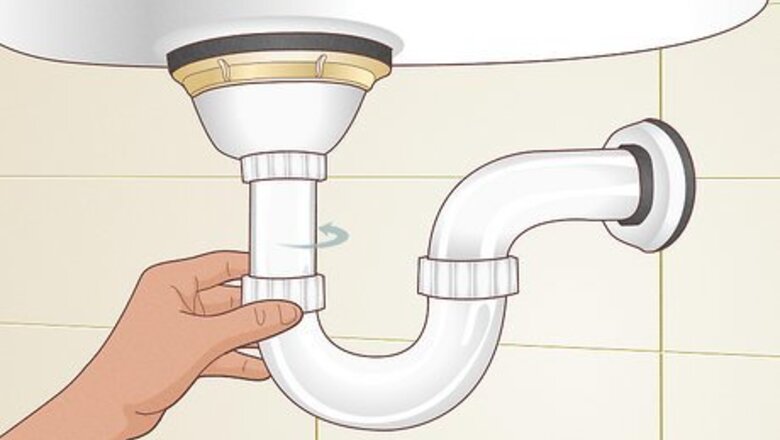
views
Disconnecting the Drain Pipe
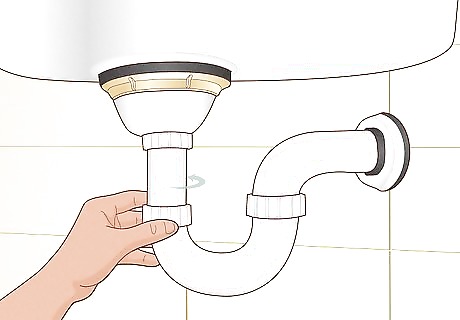
Loosen the coupling nut that connects the strainer to the drain pipe. Sink strainers are always made of metal, but most modern homes have white PVC drain pipes. You’ll find either a PVC or metal coupling nut connecting these two components beneath your sink. Loosen this nut to separate them. You should be able to loosen a PVC nut by hand, turning it counterclockwise. Wrap a towel around the nut to help you get a better grip on it. A metal nut may also require the use of a pipe wrench or large adjustable wrench. If you wish, you may also be able to disconnect the drain pipe at the top of the trap (the U-shaped bend) in order to give yourself more room to work with.
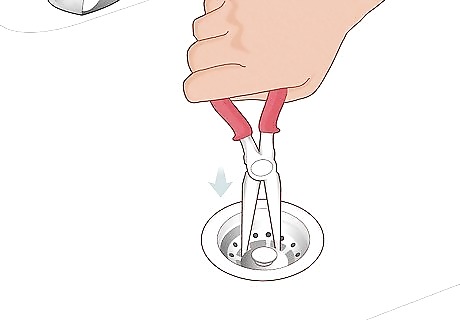
Stabilize a spinning strainer in order to remove a stubborn nut. If the strainer is spinning counterclockwise along with the nut as you loosen it, you’ll need to hold it still from above. Insert a pair of needle-nose pliers or a sink drain wrench down into the sink and pinch the strainer grate (not the removable strainer basket) to immobilize the entire strainer. You may be able to hold the pliers with one hand and loosen the nut with the other, or you may need to recruit a helper. This would be a good helper job for an older kid or teen. If you have trouble squeezing the pliers, you can also insert the handles of the pliers into the openings of the strainer grate, then stick a screwdriver between the handles and hold it steady to immobilize the sink strainer.
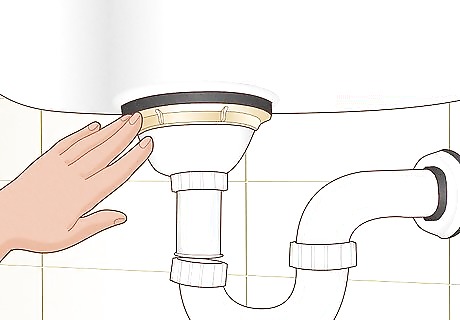
Determine the type of sink strainer you have. Locknut sink strainers have a large locking nut that feeds onto threads on the outside of the strainer itself. This in turn presses a washer and gasket against the underside of the sink. Most modern sinks have locknut sink strainers. There are also locknut strainers with screw attachments, in which 3 or 4 screws are used to help hold the locknut tight against the underside of the sink. Bell washer sink strainers have an outer bell-shaped “shell” that fits over the entire strainer. This bell housing is pressed against the underside of the sink by a nut located at the bottom of the strainer (just above the nut that connects to the drain pipe below).
Loosening and Removing the Sink Strainer

Remove the screws in the locknut if your strainer has them. If you see threads around the widest section of the strainer (where it connects to the sink), you have some version of locknut strainer. If you also see 3 or 4 screwheads against the locknut, you need to remove these screws before loosening and removing the locknut and strainer. A simple screwdriver (typically Phillips head) will do. Once you remove the screws, you should be able to loosen this type of locknut by hand. Turn it counterclockwise until it comes off the threads and slides down off the strainer. If the entire strainer is spinning when you try to loosen the locknut, use pliers to pinch (or pliers handles and a screwdriver to hold) the strainer still from topside. Use this method with any type of spinning sink strainer, locknut or otherwise. If the screws are hard to turn, then spray some WD40 onto them and wait 5 minutes. This should help to loosen them. Rex Cauldwell Rex Cauldwell, Licensed Master Plumber Removing old sinks drains is doable with some tools and effort. Start by loosening the locknut and detaching the tailpipe below. Carefully remove the strainer from above, catching water in a bucket. With the drain freed, with proper sealing a new assembly can be installed directly. Follow each step methodically and have a leak-proof drain for years to come. Even first-timers can handle it themselves.
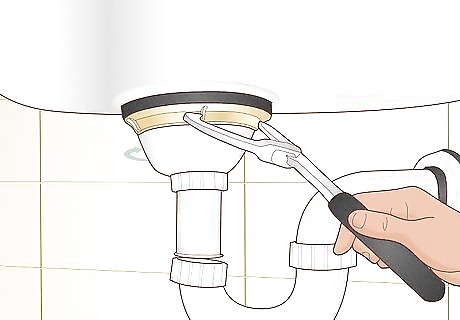
Use a wide-mouthed wrench to loosen a traditional locknut strainer. If you locknut isn’t held tight by screws, you’ll need a wrench to loosen it so that you can remove the strainer. Use a large pipe wrench or — even better — a specialized strainer locknut wrench, which you can buy at any hardware store. Turn the locknut counterclockwise with the wrench until it spins freely, then turn it by hand until it unthreads and falls off the sink strainer. If the locknut is completely rusted in place and simply will not come off, you can use the cutting wheel attachment on a rotary multi-tool to slice through the locknut, then (if needed) a chisel and mallet to split it apart. But you may also want to consider calling a plumber at this point.
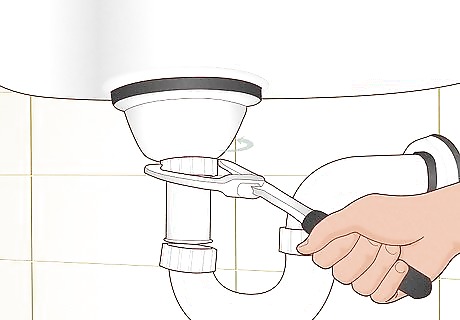
Loosen and remove the nut at the bottom of a bell washer strainer. Take the same wrench you used to loosen the nut that held the strainer to the drain pipe, and loosen the same-sized nut that pushes up against the bell-shaped housing. Work the nut off the threads and out of the way, and then pull the bell housing down and off of the strainer. If the bell housing refuses to pull free easily, wedge a flat head screwdriver into the gasket sandwiched between the bell and the underside of the sink. Pry the bell housing free and pop it off.

Wiggle the sink strainer loose and push it up and out of the sink. A moderate jiggle and twist should break the seal between the upper lip of the strainer and the rim of the topside of the sink. Then, push upward from the bottom of the strainer with one hand and pull it up and out of the sink with the other hand. If the strainer won’t break free, tap it from the underside with a mallet until it pops loose. If you have to bash too hard, though, you may damage the sink itself, so consider calling a plumber if necessary. Scrape away any dried putty or other gunk from the rim of the sink (both above and below) if you intend to install a new strainer. Use a plastic putty knife so you don’t scratch the stainless steel finish.
Installing a New Sink Strainer
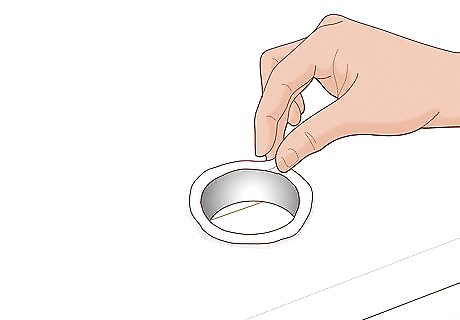
Roll out a ring of plumber’s putty and place it around the sink opening. Grab a small handful of plumber’s putty out of its container. Work it around in your hands for a few minutes to warm it and make it more pliable. Once it’s about the consistency of children’s clay (like Play-Doh), roll it into a “snake” about the thickness of a pencil, then press the ends together to make a ring. Place this ring over the rim of the opening on the topside of your sink and then use your thumbs to push it down all the way around the rim. You can buy plumber’s putty anywhere that sells plumbing supplies. Make sure you have cleaned away any old putty from the sink surface with a plastic putty knife.

Press the new sink strainer firmly down into the putty ring. Whether you’re installing a bell washer or locknut strainer, this part of the job is the same. press down firmly, so that plumber’s putty squeezes out all around the rim. Use your fingers, a plastic putty knife, and a damp rag to clear away the excess putty.
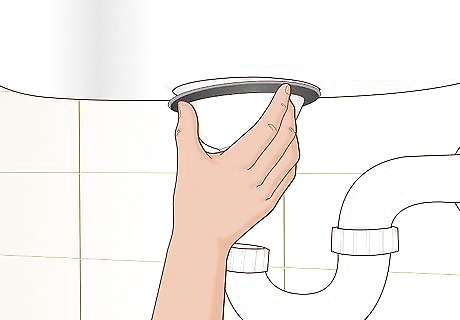
Place any included washers and gaskets between the underside of the sink and the locknut or bell housing. A metal-to-metal connection between the sink bottom and the locknut or bell housing won't be watertight. The new sink strainer will come with at least one rubber gasket, and possibly other gaskets or washers made of rubber, cardboard (to protect the rubber), or other materials. Place them as directed in the product instructions before tightening the locknut or bell housing. If you're reinstalling an old sink strainer, take the old gasket(s) to the hardware store and buy identical (but new) replacements.
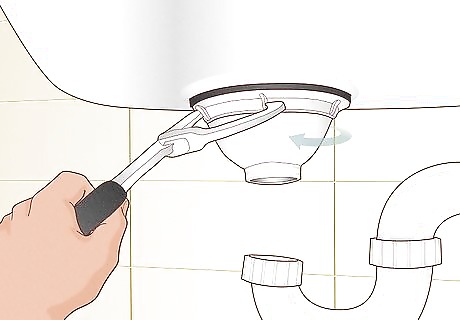
Secure the sink strainer into place from below. For a traditional locknut strainer, use a large pipe wrench or strainer locknut wrench to tighten the locknut (by turning it clockwise). Securely press the strainer against the underside of the sink, but don’t feel like you have to tighten it so much that the parts seem ready to fuse together. For a locknut strainer with screws, you only need to hand-tighten the locknut into place. The provided screws are what will press the locknut tight and hold the connection together. For a bell washer strainer, place the bell housing over the strainer, then feed the provided nut onto the threads at the bottom of the strainer. Use a wrench to tighten this firmly (but again, not excessively).
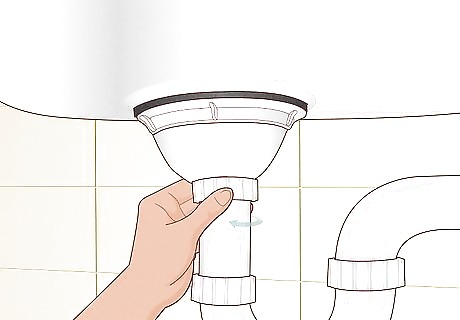
Connect the drain pipe to the sink strainer. If you have a PVC nut for making the connection, you’ll only need to hand-tighten it (clockwise). If the nut is metal, use a wrench to firmly secure it in place.
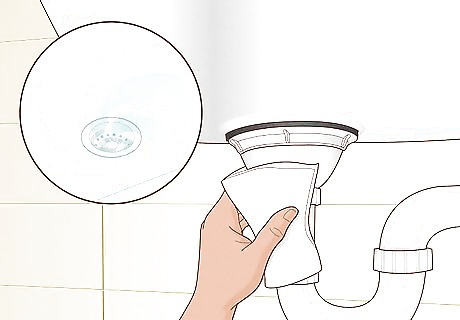
Test for leaks. Plug the sink and fill it with water. Wait a few moments, then run a tissue around the connection between the underside of the sink and the sink strainer’s locknut or bell housing (depending on the type you’ve installed). If the tissue gets damp at all, your putty seal is the likely culprit and you’ll have to re-do the installation. If this spot passes the “tissue test,” let the water out of the sink and run a dry tissue around the nut that connects the strainer to the drain pipe. If it stays dry, you’re good to go!
















Comments
0 comment